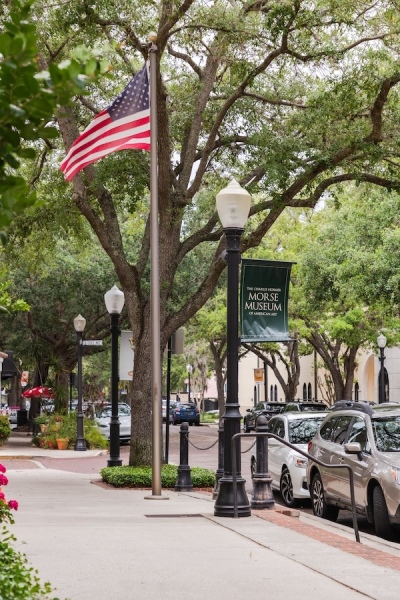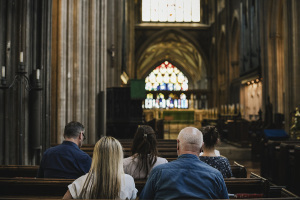Travel: Finding Tiffany’s masterpiece chapel in Florida

In a museum in a somewhat overlooked suburb of Orlando is an ornate chapel unlike anything I have ever seen.
Technically speaking, the Tiffany Chapel is not a chapel. That’s because the space isn’t consecrated. Instead, the exquisite decorative arts exhibit is the anchor of the Charles Hosmer Morse Museum of American Art.
Everything you see is by the acclaimed artist Louis Comfort Tiffany (1848-1933) or, in some cases, his studio. Tiffany is probably best known for his stained-glass windows in the late 19th and early 20th centuries. If Tiffany’s name sounds familiar for something other than windows, it’s because his father, Charles Lewis Tiffany, founded Tiffany & Co. Now owned by French luxury goods conglomerate LVMH, it today produces jewelry.
The chapel was designed for the 1893 World’s Columbian Exposition. Held in Chicago, the exposition was an iteration of the great world fairs frequently held around the turn of the last century. More than 27 million people visited the fair between May and October 1893.
Think of the Tiffany chapel — consisting principally of a high altar, baptismal font, windows, carved decorative arches and columns, candlesticks and mosaics everywhere the eye can see — as a trade show sales exhibit. It featured the best ecclesiastical furnishings and liturgical objects that Tiffany’s studio could produce.
Tiffany employed a design inspired by Byzantine and Romanesque, which complemented Richardsonian Romanesque, which by 1893 had supplanted Gothic revival as the more fashionable style of new churches.
After the exposition, a wealthy patron purchased the items for $50,000 (the equivalent to millions in 2024 dollars) for use as a chapel at the unfinished Cathedral of St. John the Divine. Originally designed in a blend of Byzantine and Romanesque, the Episcopal cathedral in New York City, which had broken ground in 1892, remains unfinished.
After St. John the Divine’s architecture switched to Gothic revival, Tiffany reacquired his chapel. It was then installed at Laurelton Hall, his Long Island estate, where it sat until a fire gutted the building in the 1950s.

Thankfully, Hugh and Jeannette McKean stepped in. They bought what could be salvaged and transported everything to their home in Winter Park, where they had established the Morse Museum on the campus of Rollins College. The McKeans later acquired other chapel elements sold off before the fire. Finally reassembled, the chapel underwent an extensive two-year conservation before opening in 1999.
Twenty-five years later, the museum is celebrating the anniversary of its anchor with a special exhibit featuring “Fathers of the Church,” a Tiffany mosaic also created for the exposition. This gold glass mosaic, reminiscent of the mosaics at the Cathedral Basilica of St. Louis in St. Louis, Missouri, depicts Saints John Chrysostom, Augustine and Ambrose. The exhibit is the first time the mosaic has been seen with the chapel since 1893.
If you go
The Morse Museum is open 9:30 a.m. to 4 p.m. Tuesday, Wednesday, Thursday and Saturday, 9:30 a.m. to 8 p.m. Friday and 1 p.m. to 4 p.m. Sunday. A modest admission is charged.
Winter Park (population of 29,795) is a small city with an attractive streetscape. The overall feel is entirely different than that of the Orlando theme parks.
Those interested in the Tiffany chapel will also appreciate three churches: All Saints Episcopal, a rare example of 1940s Gothic revival; the stately neoclassical First Congregational; and the Mediterranean revival Knowles Memorial Chapel at Rollins College. Of note, All Saints and Knowles Memorial were both designed by architect Ralph Adams Cram. Cram’s change to the architecture of St. John the Divine started the course of events that resulted in the Tiffany Chapel ending up in the museum.
Dennis Lennox writes a travel column for The Christian Post.
Dennis Lennox writes about travel, politics and religious affairs. He has been published in the Financial Times, Independent, The Detroit News, Toronto Sun and other publications. Follow @dennislennox on Twitter.





























